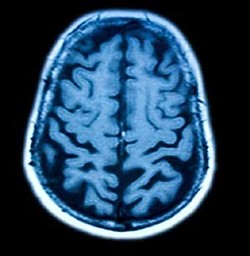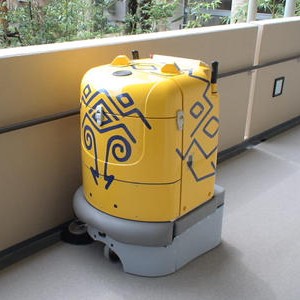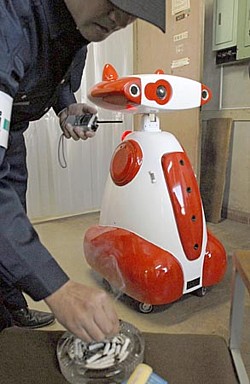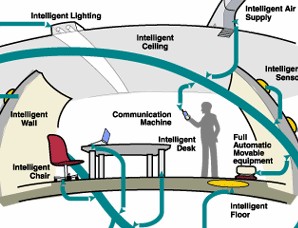 As Japanese consumers become ever more "fussy" over food safety issues, there is a growing demand for technology that improves food quality. To ease the minds of health-conscious meat-eaters, researchers at Japan's National Institute of Animal Health (NIAH) have developed a convenient method for identifying cattle infected with mad cow disease, simply by measuring the brain waves they produce in response to audio stimuli.
As Japanese consumers become ever more "fussy" over food safety issues, there is a growing demand for technology that improves food quality. To ease the minds of health-conscious meat-eaters, researchers at Japan's National Institute of Animal Health (NIAH) have developed a convenient method for identifying cattle infected with mad cow disease, simply by measuring the brain waves they produce in response to audio stimuli.
To develop and test the new method, the researchers infected 11 healthy cows with mad cow disease and observed the onset of symptoms and changes in brain activity. Mad cow disease (a.k.a. Bovine Spongiform Encephalopathy, or BSE) is a fatal infectious disease that affects the central nervous system of cattle (and humans), turning the brain into a sponge-like substance. Symptoms of the disease include loss of muscle control, inability to stand or walk properly, agitation, and red eyes.
Approximately 24 months after infection, the 11 test cows began to exhibit the typical physical signs of BSE. However, at around 22 months after infection -- before the physical symptoms became evident -- the researchers discovered that the brains of the infected cows had a delayed reaction to sound. In all 11 mad cows, the brain waves elicited in response to audio stimuli were a few tenths of a millisecond slower than in healthy cows.
The researchers believe the acoustic nerves responsible for transmitting sound impulses to the brain became damaged as the disease progressed, resulting in a delayed response time. By using a device that measures this delay, ranchers can identify mad cows in their herds, the researchers suggest.
While the newly developed method is still less accurate than conventional lab testing of brain samples taken from carcasses, it does make it easier to detect possible infection at an early stage, before outward signs of the disease appear.
The researchers, who plan to study the data further and improve the accuracy of the test, eventually hope to develop a portable version of the device.
[Source: Mainichi]






 As Japanese consumers become ever more "
As Japanese consumers become ever more "
 In an effort to accelerate the development of next-generation automobiles and robots, Toyota is turning to some of Japan's top neuroscientists. According to a December 14 announcement, the automaker has teamed up with the Institute of Physical and Chemical Research (
In an effort to accelerate the development of next-generation automobiles and robots, Toyota is turning to some of Japan's top neuroscientists. According to a December 14 announcement, the automaker has teamed up with the Institute of Physical and Chemical Research ( An autonomous robot janitor built by Subaru (Fuji Heavy Industries) and Sumitomo has landed a job cleaning the outdoor hallways of a new 14-story Bali-themed luxury apartment complex in Tokyo. Lovingly nicknamed 'Tondon' in an apparent reference to a legendary Balinese snake god, the robot is a close relative of
An autonomous robot janitor built by Subaru (Fuji Heavy Industries) and Sumitomo has landed a job cleaning the outdoor hallways of a new 14-story Bali-themed luxury apartment complex in Tokyo. Lovingly nicknamed 'Tondon' in an apparent reference to a legendary Balinese snake god, the robot is a close relative of  Researchers from the University of Tokyo, Oita University, the Shimane Institute of Health Science and Delta Tooling, an industrial equipment manufacturer, have developed a prototype smart car seat capable of detecting when its occupant is on the verge of falling asleep. The seat was unveiled at a symposium held at the University of Tokyo on February 5.
Researchers from the University of Tokyo, Oita University, the Shimane Institute of Health Science and Delta Tooling, an industrial equipment manufacturer, have developed a prototype smart car seat capable of detecting when its occupant is on the verge of falling asleep. The seat was unveiled at a symposium held at the University of Tokyo on February 5.  Robot manufacturer
Robot manufacturer 